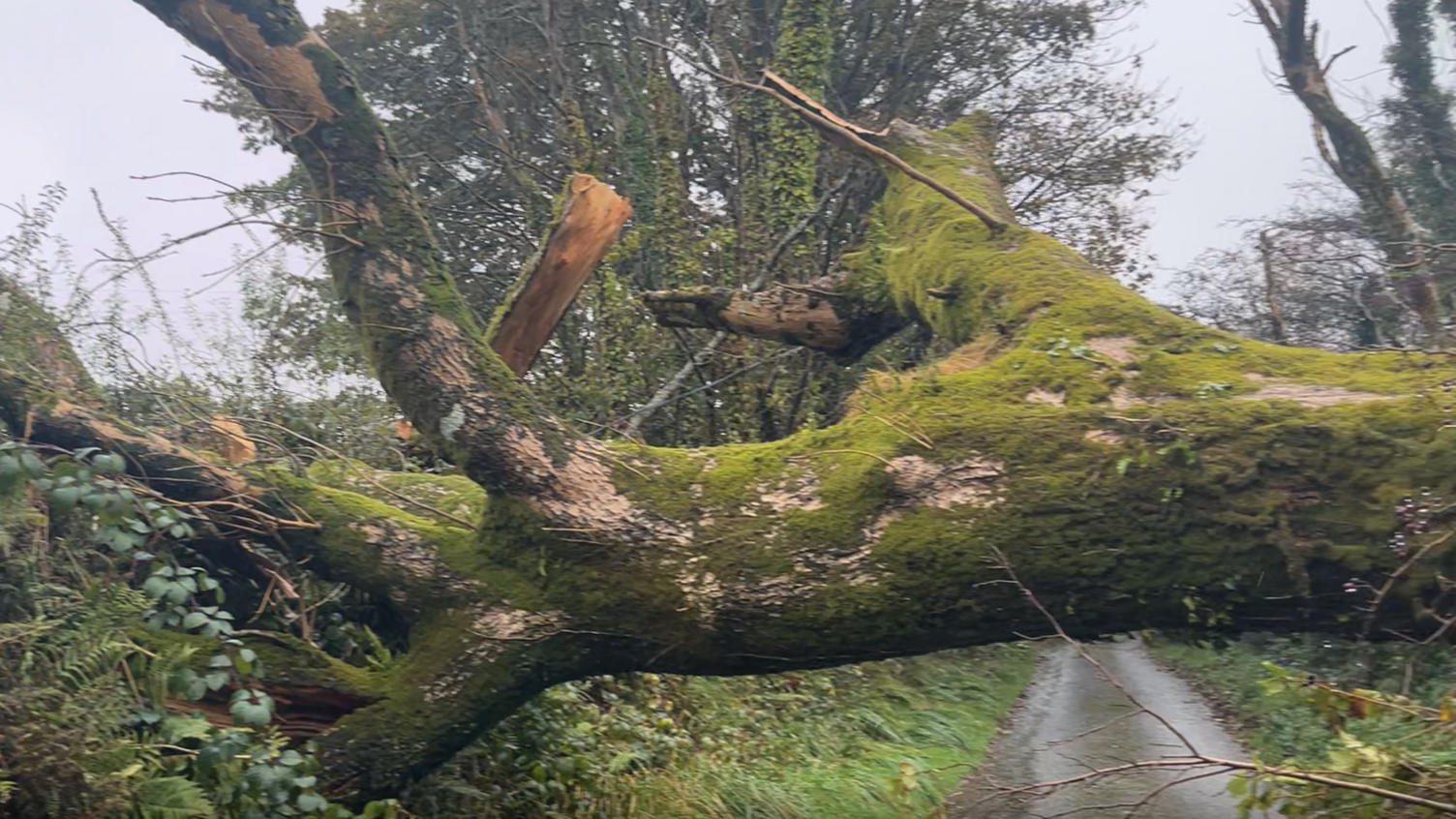Damage and disruption as Storm Amy hits UK
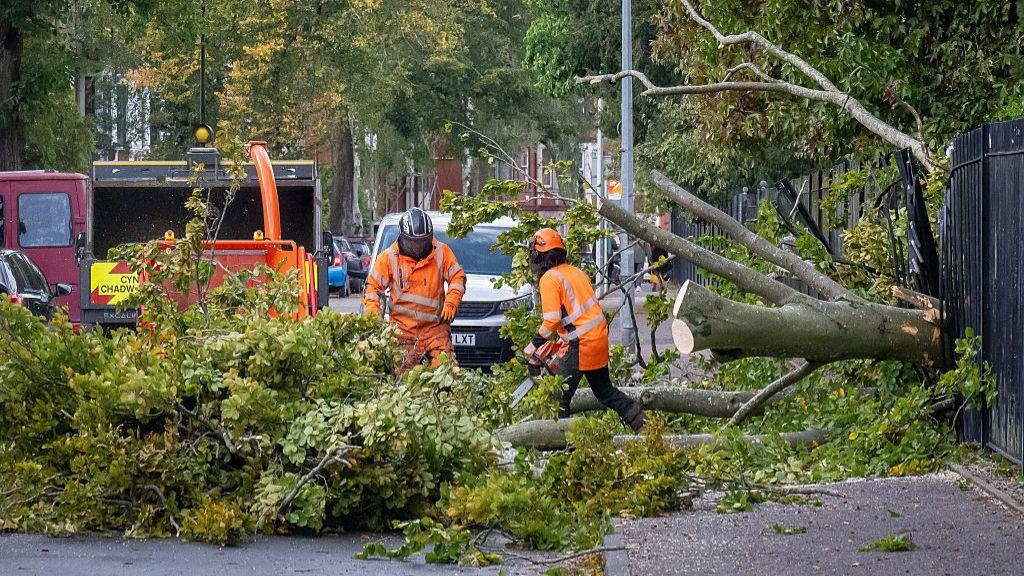
- Published
Storm Amy has brought heavy rain and strong winds to large parts of the UK - leaving thousands of homes without power across Scotland and Northern Ireland.
A yellow warning for winds was in place for the rest of the UK throughout most of Saturday.
Many railway lines and roads were closed and ferry services were disrupted amid high winds with gusts of more than 100mph recorded in some exposed areas.
A man in his 40s died in the Republic of Ireland on Friday afternoon in what police described as a "weather-related incident".
'We were having dinner and a tree crashed into our house'
- Published4 October
Storm names 2025-26: How do storms like Amy get their names?
- Attribution
- Published1 October
An amber wind warning was also in place for parts of northern Scotland for much of the day,
In Scotland, Scottish and Southern Electricity Networks (SSEN) said it was working to reconnect 34,000 customers on Saturday evening. Around 9,000 properties remain without power in Northern Ireland and hundreds of homes had lost power in Wales.
On Friday night a gust of 96mph was recorded in Tiree in the Inner Hebrides, while Northern Ireland recorded its highest October gust on record, with 92mph at Magilligan, County Londonderry.

A derelict building collapsed in Glasgow, crushing a car
All eight of London's Royal Parks were closed on Saturday and opening times on Sunday will be delayed due to safety inspections.
A statement on the Royal Parks website, external said: "The safety of visitors and staff is our top priority."
Storm Amy also set a new record for the deepest area of low pressure in the UK for October.
The earth's atmosphere exerts pressure on the surface and is measured in hectoPascals (hPa), also called millibars.
Storm Amy showed central pressure of 947.9hPa at Baltasound, Shetland. This exceeds the previous record of 950.9hPa in 1988.
In an area of low pressure the weather is often unsettled.
The Police Service of Northern Ireland (PSNI) said the rail network was suspended on Friday due to multiple trees falling, while airports warned passengers to check the status of their flight before flying.
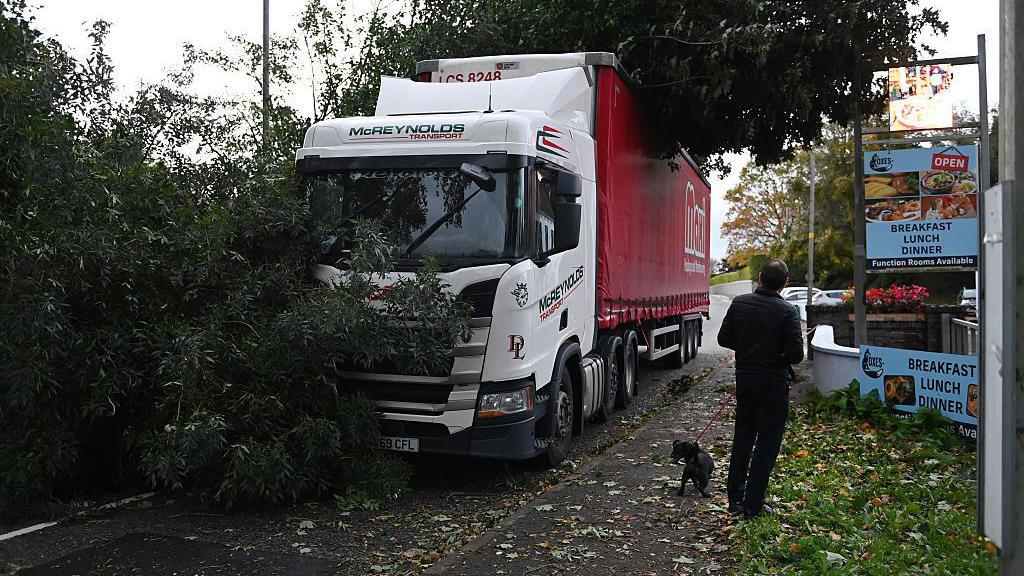
Trees down on a road in County Antrim, Northern Ireland
Several ScotRail services and ferries were cancelled ahead of the storm's arrival, while some bridges were closed to high-sided vehicles.
On Saturday morning, ScotRail said around 80 trees had been brought down on lines and engineers were checking routes before resuming services.
All services out of Glasgow Central were suspended until early Saturday afternoon; by Saturday evening services between Glasgow and Mallaig, Oban and Wemyss Bay have been shut as have trains between Inverness and Aberdeen.
By Sunday, Storm Amy will have moved further out into the North Sea so it will be drier with lighter winds for the second half of the weekend.
The next storm name will be Bram. A new list of names is issued every year by the Met Office before the season starts in September with both male and female names chosen by the public.
Storms can be named by either the Met Office, Met Éireann or the Dutch weather service KNMI when impacts are forecast to be "medium" to "high".
Get in touch
Do you live in a region affected by the storm?
- Published4 October
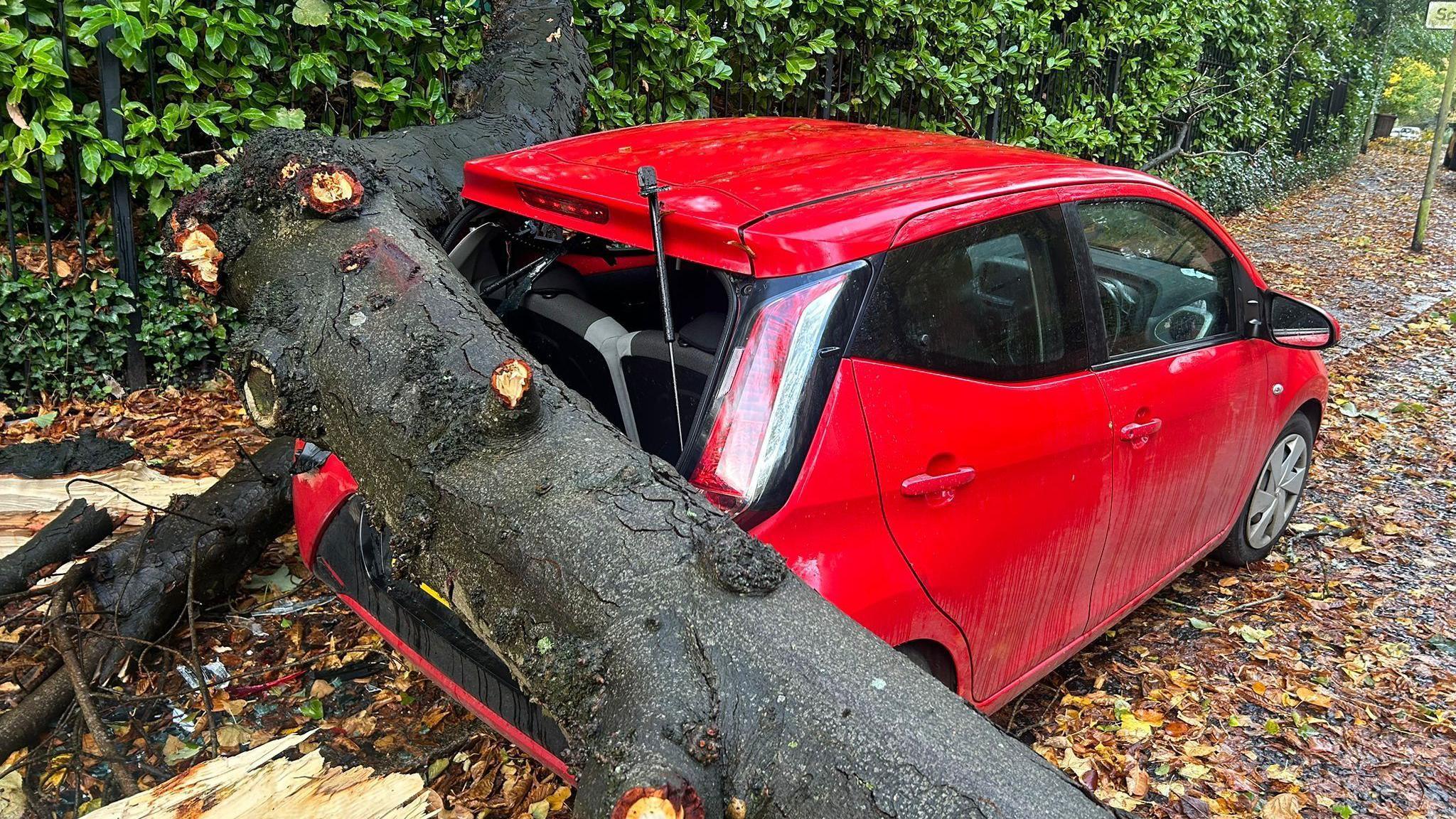
- Published4 October
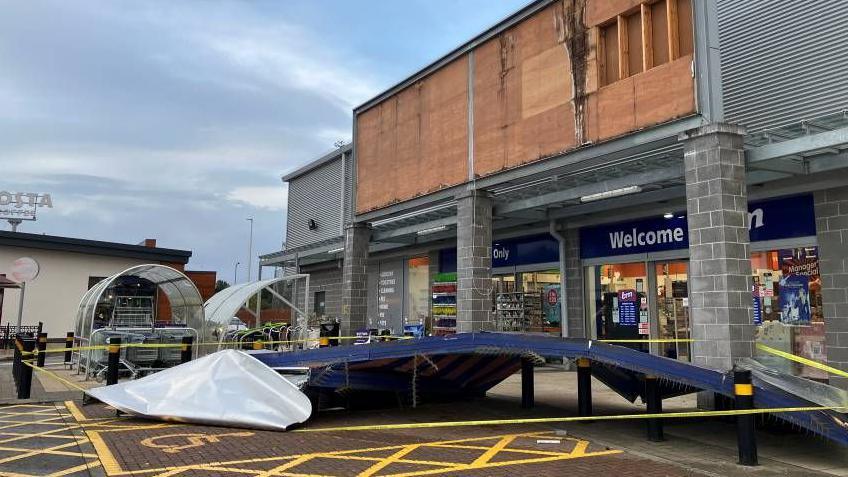
- Published4 October
